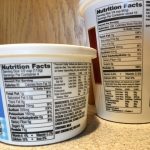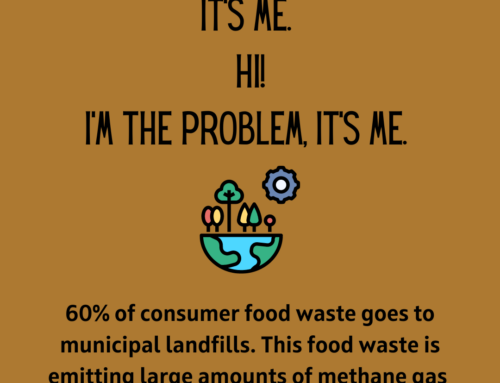Have you noticed that when you eat a meal that includes more protein you feel fuller? This isn’t just in your head, there’s some science behind it. A new study featured in the Journal of the Academy of Nutrition and Dietetics, addressed the effect of protein intake on perceived fullness and confirmed that protein does make us feel fuller. Learning how to balance your plate, not only helps you get the nutrients your body needs, but can also help you eat the right amount of food. If you include enough protein at each meal, you may control calories at mealtime or limit excess calories from unnecessary snacking.
Fiber and protein in the diet both play a roll in satiety and “fullness”. By balancing your plate – to include fiber from fresh fruits or vegetables, and a reasonable portion of protein (perhaps 3 ounces of meat or fish, 2 eggs, a combination of beans and nuts, 8 ounces milk) you can add to the satiety factor of the meal. Of course adding dietary fat is important too, as fat also contributes greatly to satiety. Fat is calorie-dense, so you don’t need a huge amount of it. A perfect example of adding satiety would be adding 2 tablespoons of an oil-based dressing to a tossed green salad topped with a salmon filet, cottage cheese, or beans and nuts. The whole package of fiber, protein and fat, is much more satisfying as a meal than the greens alone would be.
Protein is Important but Not a Magic Bullet
Of course, simply upping your protein intake isn’t a magic weight loss bullet. As the authors of the study point out – There’s often “room for dessert” – even when we are full. There are also many aspects of eating – your environment, how quickly or slowly you eat, whether you are distracted during eating (television, work, standing, in the car, etc) – that can impact your overall diet quality and weight management.
In addition, your body won’t absorb large doses of protein at one time, so it’s best to spread out your protein intake through the day. The amount of protein you need depends on your size, age, gender and activity level, but shooting for about 20 grams at each meal is a good idea.
Here are some examples of protein sources in your diet:
- Eggs. Eggs are easy to prepare each egg white provide 7 grams of protein. You can hard cook 6 eggs on Sunday and then enjoy them with breakfast, lunch or as a snack through the week for an extra 7 grams of protein per egg.
- Beef, pork, poultry, fish. Each ounce provides 7 grams of protein, so a 4 ounce portion provides about 28 grams of protein. Choose leaner varieties, and remove visible fat to reduce saturated fat content.

- Cottage Cheese and Ricotta. While all cheese provides protein, hard cheeses are pretty calorie dense and high in saturated fat – enjoy them in smaller portions, but not as a “daily protein booster”. You get more protein with less calories from cottage cheese or ricotta. A 1/2 cup serving of Ricotta can provide 14 grams of protein, and a 1/2 cup of cottage cheese provides about 10-11 grams.
- Nuts and Seeds. Adding 1/4 cup of nuts to a dish (stir fry, salads, vegetable) will add about 4-5 grams of protein, but realize they are calorie dense (150-200 calories per 1/4 cup). Also remember that each 1/2 cup of vegetables provides about 2 grams of protein to the diet.
- Nut Butters. 2 TB Tablespoons of peanut butter or other nut butter provides about 8 grams protein
- Tofu provides about 10 grams of protein per half cup.
Calories and Protein
If you are young and active, your protein choices are vast, as you may not need to worry much about calories. As you age however, it becomes even more important to get adequate protein at each meal, but it can become a challenge to get the nutrients you need with a smaller calorie load. For instance, a 55 year old woman who is 5 foot 6 inches may only require 1600-1800 calories a day to maintain her 140 pound weight. So with this mind, consider that each of these portions of food provide 7 grams of protein:
|
FOOD/PORTION = 7 GRAMS PROTEIN |
CALORIES |
| Skinless chicken, 1 ounce |
50 |
| Low fat cottage cheese, 1/3 cup |
60 |
| Salmon, 1 ounce |
65 |
| Part skim ricotta, 1/4 cup |
70 |
| Egg, 1 large |
75 |
| Tofu, 1/3 cup |
80 |
| Beef sirloin, 1 ounce |
90 |
| 1% Milk |
100 |
| Oats, cooked, 1-1/4 cups |
180 |
| Peanut Butter, 2 TB |
190 |
| Quinoa, 1 cup cooked |
225 |
Adding grains to your diet is a healthy choice for fiber, vitamins and minerals, but you see that a 2 ounce portion of chicken would provide you with 14 grams of protein at only 100 calories, whereas you’d have to consume 2 cups of cooked quinoa to get 14 grams of protein (and 450 calories).
While the exact amount of protein needed to enhance fullness will vary from person to person, how you add more high quality protein to your diet, and which you choose, may depend on a number of factors that impact your weight management plan.





Awesome article not explaining the benefits of protein but how the body doesnt store protein so we need to continually top it up to ensure our muscles, skin, hair, bones and every cell of our body remains nourished and healthy – well written!
*not only